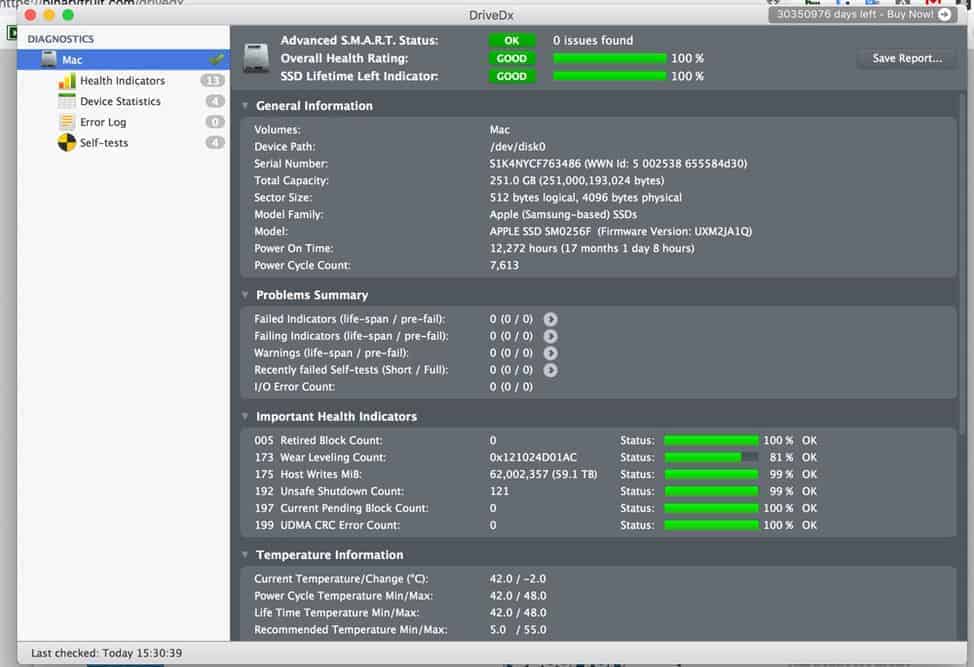

So you can find out about the health of your hard drives without having completed a degree in computer science. The nice thing is that the things that were complained about are displayed clearly and understandably in DriveDx, even for laypeople, with green, orange or red bars and terms such as "ok" and percentages. Most of them showed no particular problems, but DriveDx found some of the items. To show how the DriveDx evaluation works, I checked all of my external hard drives. The reports that are sent by e-mail can be set up in the settings. Of course, you can also have a report of your own drives emailed to you. This is helpful, for example, if you want to keep an eye on the hard drive health of servers or the Macs of friends who live remotely. These can either be created time-controlled at certain intervals or triggered by warnings from the hard disks. In addition to checking via the DriveDx interface, there is also the option of having automated reports emailed by the software. Email reports for remote hard drive monitoring
Drivedx student for free#
Due to the problems that exist between the DriveDx USB driver and the T2 chip of newer Macs, it is unfortunately not possible to use the monitoring for free storage space on every hard drive without restrictions. The top drive is my external SSD, which I also start from. These limits can be set separately for each hard drive, but here, too, I had the problem with the T2 chip: After every restart, DriveDx has no access to the corresponding data on the external hard drives if I don't unplug them for a short time. In order to avoid such problems in the future, you can use a helpful feature of DriveDx, which sends out warnings in the form of notifications if you fall below freely definable limits (in percentages). For me, however, it was an abrupt transition from normal operation to "unusable" because Adobe Premiere filled up all available hard drive space on the system disk within a few minutes. These arise because he is desperately trying to shovel data back and forth in order to somehow be able to continue. When the hard drive space on my "Macintosh HD" was only a few hundred megabytes large at some point, the finder raised the white flag and hung itself.Īs a rule, you will notice that the hard drive is getting fuller long beforehand because the finder is becoming more and more sluggish and occasionally has small dropouts. The whole thing happened when editing videos with Adobe Premiere, although a few gigabytes of new data quickly develop that need to be written somewhere.
Drivedx student mac#
In the last few years, I've managed to shut down my Mac exactly once by filling the startup volume completely with data. There are numerous instructions in the FAQ or the knowledge base. After a restart, however, the problem occurs again and you have to disconnect the hard disks again briefly if you want to run evaluations with DriveDx.

For me, the external hard drives then appeared with all evaluations in DriveDx. However, the solution is very simple: pull out the hard drive (after ejecting it in the Finder) briefly unplugged from the Mac and plugged it in again. This means that DriveDx cannot access the external hard drives after the system has started.
Drivedx student pro#
After a short email exchange with DriveDx support, it was also clear why this was the case: On Macs with the T2 security chip (such as the MacBook Pro from 2018 or the iMac Pro), the USB driver from DriveDx is activated by the macOS when booting Driver overwritten.


 0 kommentar(er)
0 kommentar(er)
